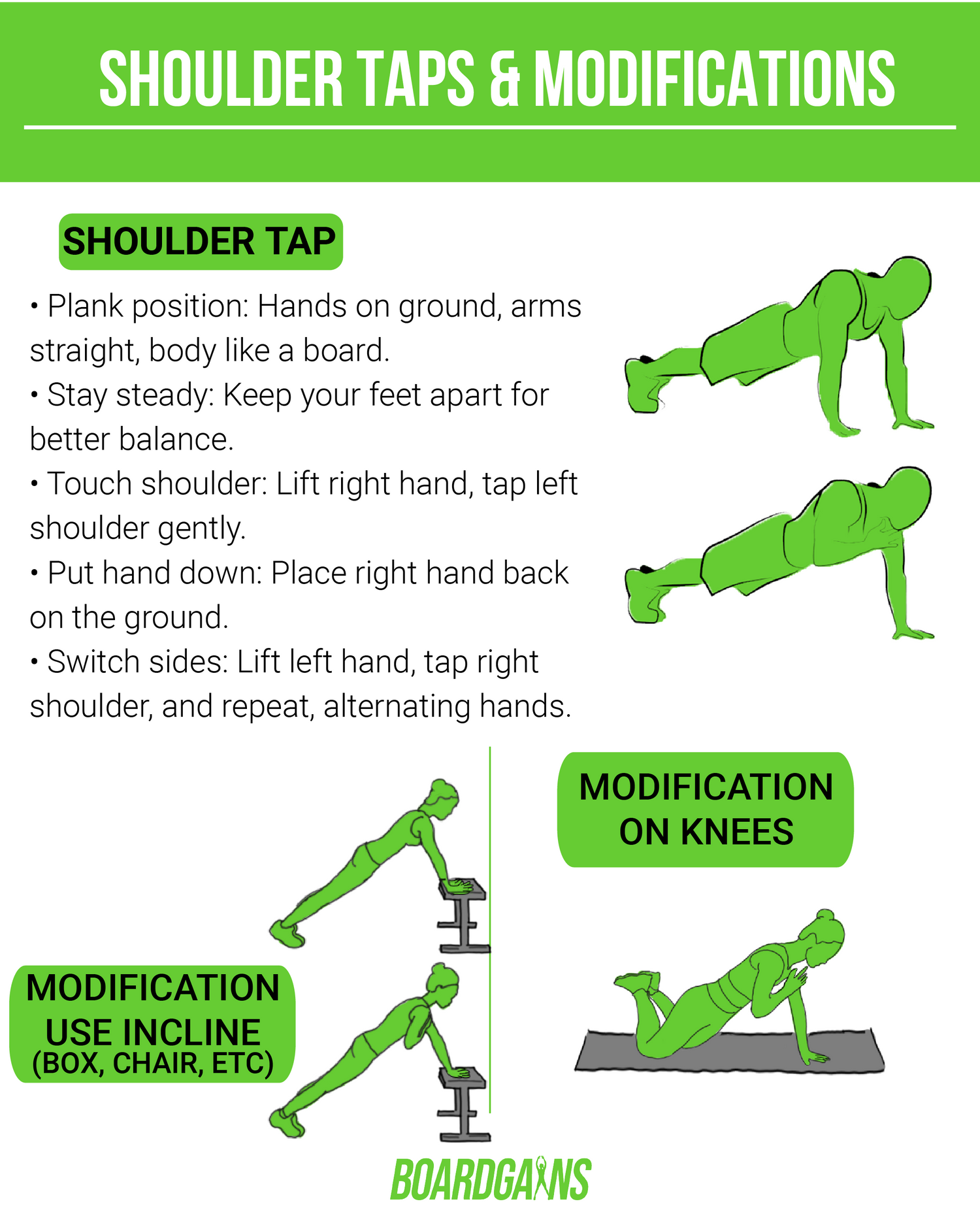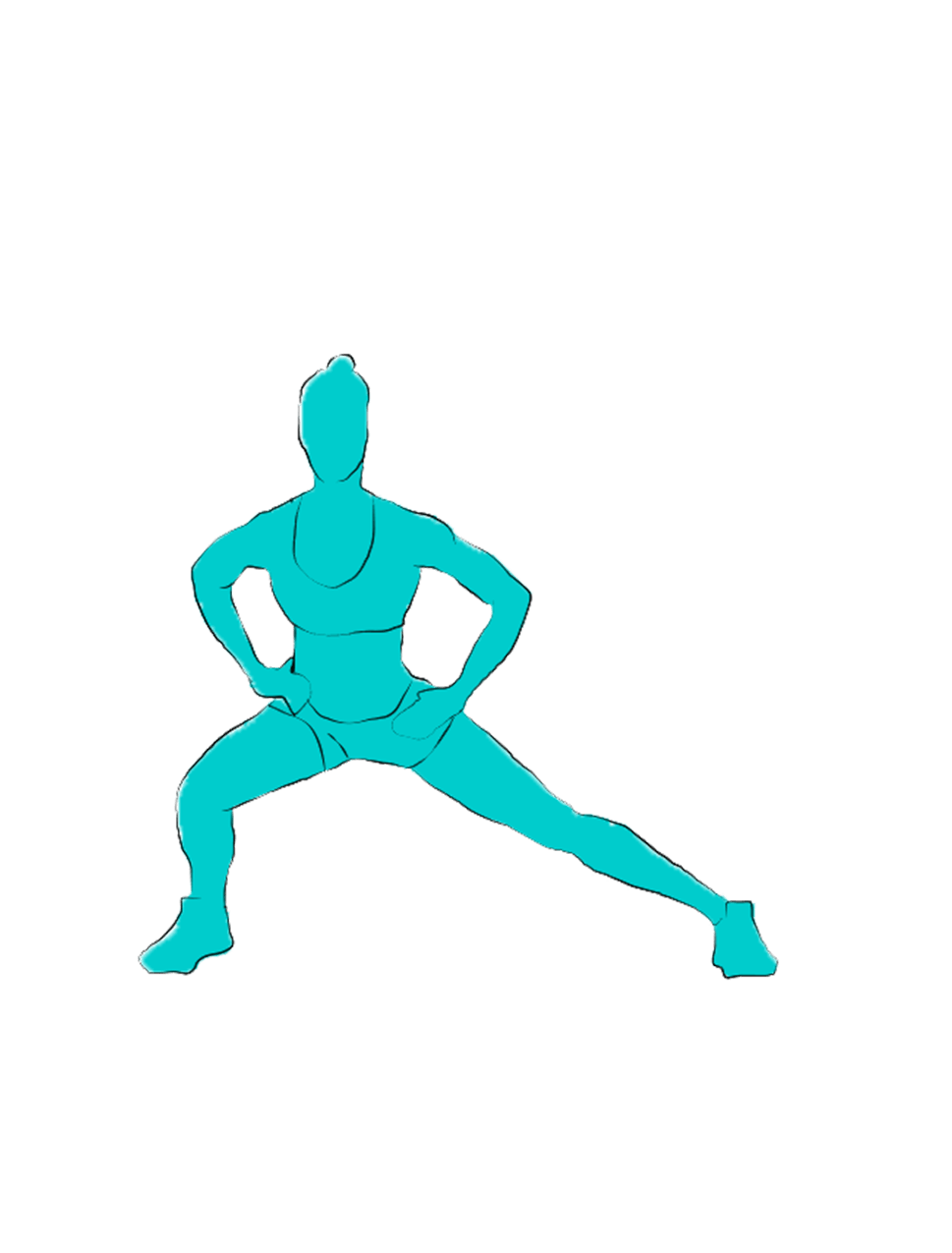Introduction to Shoulder Taps
In the world of fitness, there are countless exercises that promise to deliver results. However, few can offer the powerful combination of strengthening both your shoulders and your abs like the shoulder tap. This versatile bodyweight exercise is perfect for people of all fitness levels and can be easily incorporated into any workout routine. At Boardgains, we love incorporating this fun and challenging exercise into our fitness board game. In this article, we will explore the benefits of shoulder taps, the correct way to perform them, common mistakes to avoid, and tips for maximizing your results.
Benefits of Shoulder Taps
Shoulder taps are a fantastic way to target multiple muscle groups in a single exercise. They not only work your shoulders and abs but also engage your entire upper body and core. Here are some of the key benefits of this versatile exercise:
Stronger Shoulders
The primary focus of shoulder taps is on your deltoid muscles, which make up the rounded contour of your shoulders. By consistently performing shoulder taps, you'll notice an increase in strength and stability in these muscles, improving your overall upper body performance.
Improved Core Strength
Shoulder taps also engage your core muscles, including your abs, obliques, and lower back. As you alternate between tapping your shoulders, you'll be forcing your core to stabilize your body, leading to improved strength and endurance in these areas.
Enhanced Stability and Balance
By challenging your stability and balance, shoulder taps help improve your body's overall ability to maintain proper alignment and posture during other exercises and daily activities.
Better Posture
The engagement of the core and upper body muscles during shoulder taps can help improve your posture over time. A strong core is essential for maintaining good posture and preventing issues like back pain.
How to Perform Shoulder Taps Correctly
To get the most out of this exercise and minimize the risk of injury, it's crucial to perform shoulder taps with proper form.
Step-by-step Guide
- Start in a high plank position, with your hands shoulder-width apart and your feet hip-width apart. Keep your body in a straight line from your head to your heels.
- Engage your core and keep your hips as still as possible.
- Slowly lift your right hand and tap your left shoulder, then return your hand to the starting position.
- Repeat on the other side, lifting your left hand to tap your right shoulder.
- Continue alternating sides for the desired number of reps.
Common Mistakes to Avoid
- Arching or dropping your lower back
- Moving your hips excessively
- Bending your elbows when tapping
Shoulder Tap Variations
Depending on your fitness level, you may want to try different variations of shoulder taps to challenge yourself or to make the exercise more accessible.
Beginner Variations
-
Knee-supported Shoulder Taps:
Instead of starting in a high plank position, lower yourself onto your knees, maintaining a straight line from your head to your hips. This variation reduces the amount of weight you need to support and makes the exercise easier. -
Incline Shoulder Taps:
Place your hands on an elevated surface, such as a bench or a step, to reduce the intensity of the exercise. As you become stronger, you can gradually lower the incline to increase the challenge.
Advanced Variations
-
Feet-elevated Shoulder Taps:
Place your feet on an elevated surface, like a bench or a step, to increase the intensity of the exercise and engage your core even more. -
Slow-motion Shoulder Taps:
Perform the exercise slowly and deliberately, holding each shoulder tap for a few seconds. This increased time under tension will intensify the workout and challenge your stability.
Incorporating Shoulder Taps into Your Workout Routine
Frequency and Duration
To effectively build strength and endurance in your shoulders and abs, aim to incorporate shoulder taps into your workout routine 2-3 times per week. Start with 3 sets of 10-12 reps, and gradually increase the number of sets or reps as you become stronger.
Combining with Other Exercises
Shoulder taps can be easily combined with other exercises to create a well-rounded workout. Consider incorporating them into a circuit training session, alternating between shoulder taps and other upper body, core, or cardio exercises.
Conclusion
Incorporating shoulder taps into your workout routine can lead to significant improvements in shoulder and core strength, stability, balance, and posture. By performing the exercise with proper form, experimenting with different variations, and combining it with other exercises, you'll be well on your way to a stronger, healthier body.
FAQs
-
Are shoulder taps suitable for beginners?
Yes, shoulder taps can be modified to accommodate various fitness levels. Beginners can try knee-supported or incline shoulder taps to ease into the exercise. -
Can shoulder taps cause shoulder pain?
If performed incorrectly, any exercise can cause discomfort or pain. Ensure you use proper form and avoid common mistakes like arching your back or moving your hips excessively. -
How often should I perform shoulder taps?
Aim to incorporate shoulder taps into your workout routine 2-3 times per week for the best results. -
Can I do shoulder taps every day?
While it's possible to do shoulder taps every day, it's essential to allow your muscles time to recover. Incorporate rest days or alternate between different exercises to prevent overuse injuries. -
What other exercises complement shoulder taps?
Shoulder taps can be combined with other upper body, core, or cardio exercises for a well-rounded workout. Examples include push-ups, planks, mountain climbers, and burpees.










Leave a comment
This site is protected by hCaptcha and the hCaptcha Privacy Policy and Terms of Service apply.